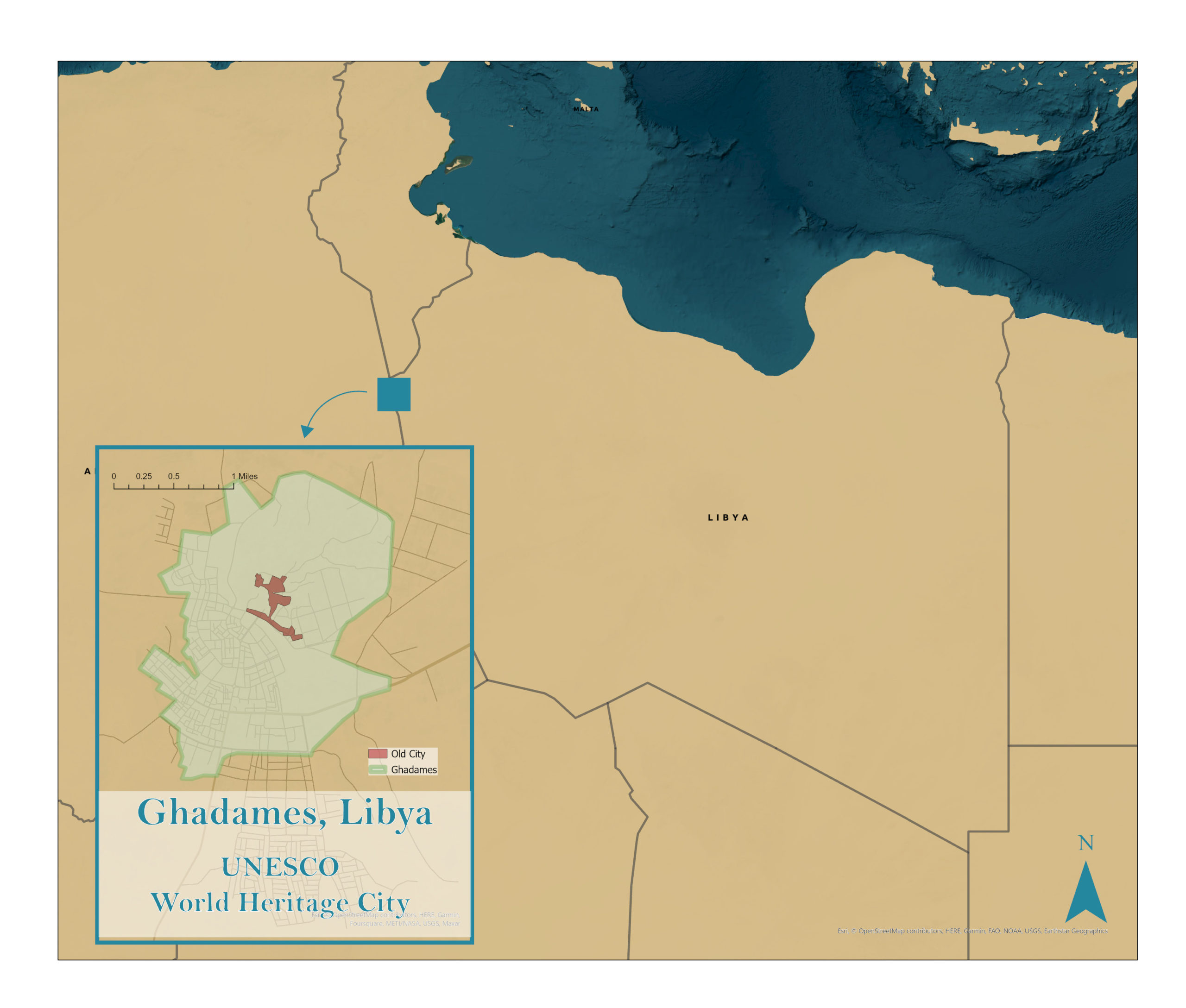Libya has been in the news a lot lately, from the catastrophic flooding that killed over 10,000 people, to continued strife between warring factions. It breaks my heart when I hear such devastating news about a country a grew up in and have fond memories of. I’ve left Libya years ago, but I still find myself searching for it on maps, in stamps, in satellite images, from old classmates’ posts on Facebook, and in old photos. Yet, even as I learn more about the country, the image of Libya has become more distant and unknowable.
But here, on my own website, I’ll write about the country that I’m still trying to find before it disappears into the passage of time. So here it goes:Libya has five UNESCO designated world heritage sites: The ones that are more famous along the Mediterranean coast: old Roman cities Sabratha, and Leptis Magna, and the Greek city of Cyrene. Less well known are the world heritage sites in the desert, the Rock Art of Tadrart Acacus, and the Old Town of Ghadames.
Where is Ghadames?
Ghadames has been called the “Jewel of the Desert” for centuries. It sits at the junction where three countries (Libya, Algeria, and Tunisia) meet, in the middle of the Saharan desert where temperatures can reach 130 degrees Fareheit in the summer and freezing in the winter. Its unique architecture built to withstand this extreme desert weather was the reason it was given the World Heritage designation.

According to the UNESCO World Heritage site,
“The Old Town of Ghadamès is an exceptional example of desert urban settlement and architecture demonstrating the extraordinary human response to living in an incredibly harsh environment.[1]
The houses have a minimum of two main floors. The ground floor, which may be sunken, is accessed by a single door that opens onto a narrow hallway leading to a rectangular-shaped room where provisions are stored. At the back there is a staircase that leads to a much more spacious upper level. The first floor generally includes a raised attic and bedrooms, and sometimes a sitting-room. Sometimes there is a second floor with a similar layout. Ground-level living space encroaches upon the blind enclosed passageways along the walls on the ground floor which open onto the city, forming arcades rather than actual streets. At the level of the terraces only the projecting portion formed by the raised attic rises above the roof, marked off by low enclosure walls.

The terraces of adjacent houses are joined with each other forming an open cityscape. The terrace is the domain of women, and gives them a great deal of freedom. Communicating between terraces they make friends with neighbours and can even move about the ‘roof’ of the city. The covered arcades at ground level are generally reserved for men.
The old part of the town was declared a UNESCO World Heritage site in 1986.[2
Given the fact that the earth is experiencing a persistent global warming, it is worth examining how old civilizations leveraged their building technology to withstand extreme heat and survive. Such relics of human ingenuity and perseverance should be preserved and studied to see what techniques can be copied in today’s world.
Personally, I am interested in looking at the old town of Ghadames because Libya was my home for the first 15 years of my life. Years later, I think about the country, how it was formed, and how it disintegrated among internal and external wars. I wonder if it will survive as a country, or if its indigenous culture will continue as it always had. Or, could Ghadames become buried in the Sahara sand from neglect. Documenting an ancient site through blogs like this might help preserve its history.
[1] Old Town of Ghadames, UNESCO World Heritage Convention
[2] The Old Town of Ghadames, Kaushik Patowary, Amusing Planet, March 29, 2013